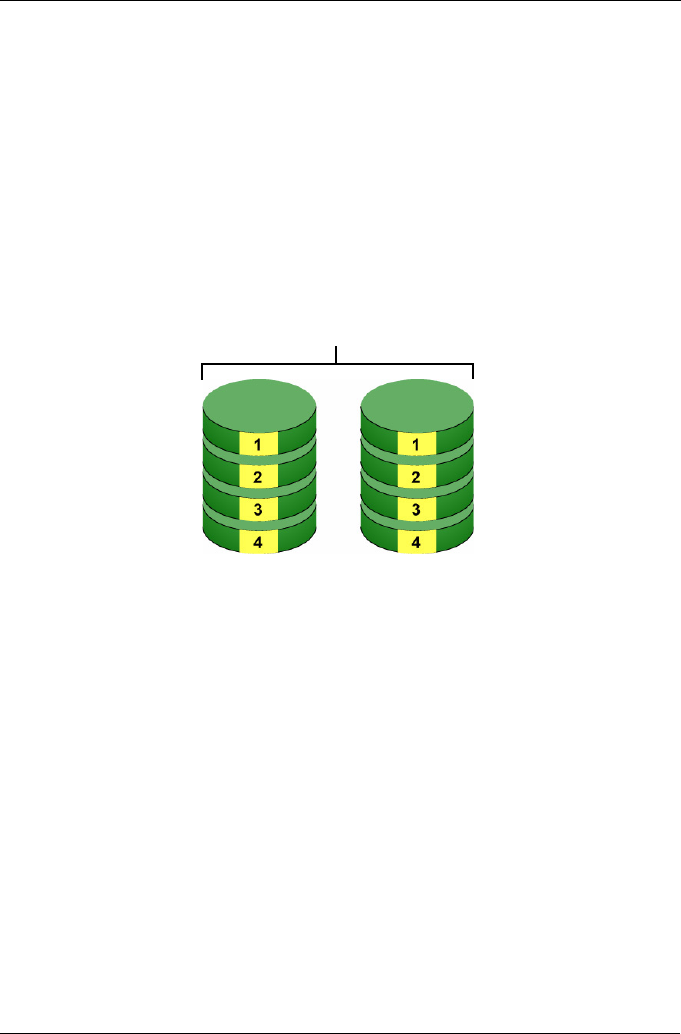
Chapter 6: Technology Background
157
RAID 1 – Mirror
When a logical drive is mirrored, identical data is written to a pair of physical
drives, while reads are performed in parallel. The reads are performed using
elevator seek and load balancing techniques where the workload is distributed in
the most efficient manner. Whichever drive is not busy and is positioned closer to
the data will be accessed first.
With RAID 1, if one physical drive fails or has errors, the other mirrored physical
drive continues to function. Moreover, if a spare physical drive is present, the
spare drive will be used as the replacement drive and data will begin to be
mirrored to it from the remaining good drive.
Figure 2. RAID 1 Mirrors identical data to two drives
The logical drive’s data capacity equals the smaller physical drive. For example,
a 100 GB physical drive and a 120 GB physical drive have a combined capacity
of 100 GB in a mirrored logical drive.
If physical drives of different capacities are used, there will be unused capacity on
the larger drive.
RAID 1 logical drives on SuperTrak consist of two physical drives.
If you want a mirrored logical drive with more than two physical drives, see
“RAID 1E – Enhanced Mirror” on page 158 and “RAID 10 – Mirror / Stripe” on
page 161.
Data Mirror
Physical Drives


















